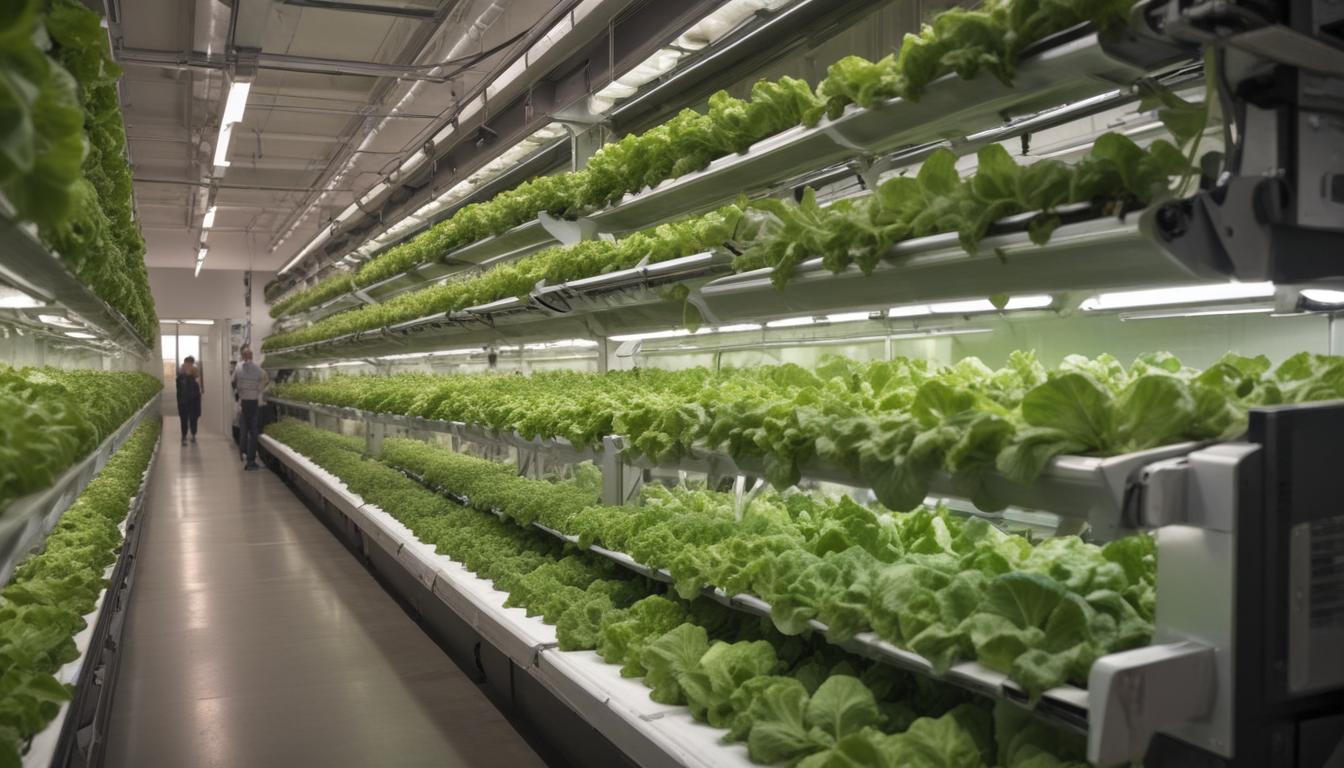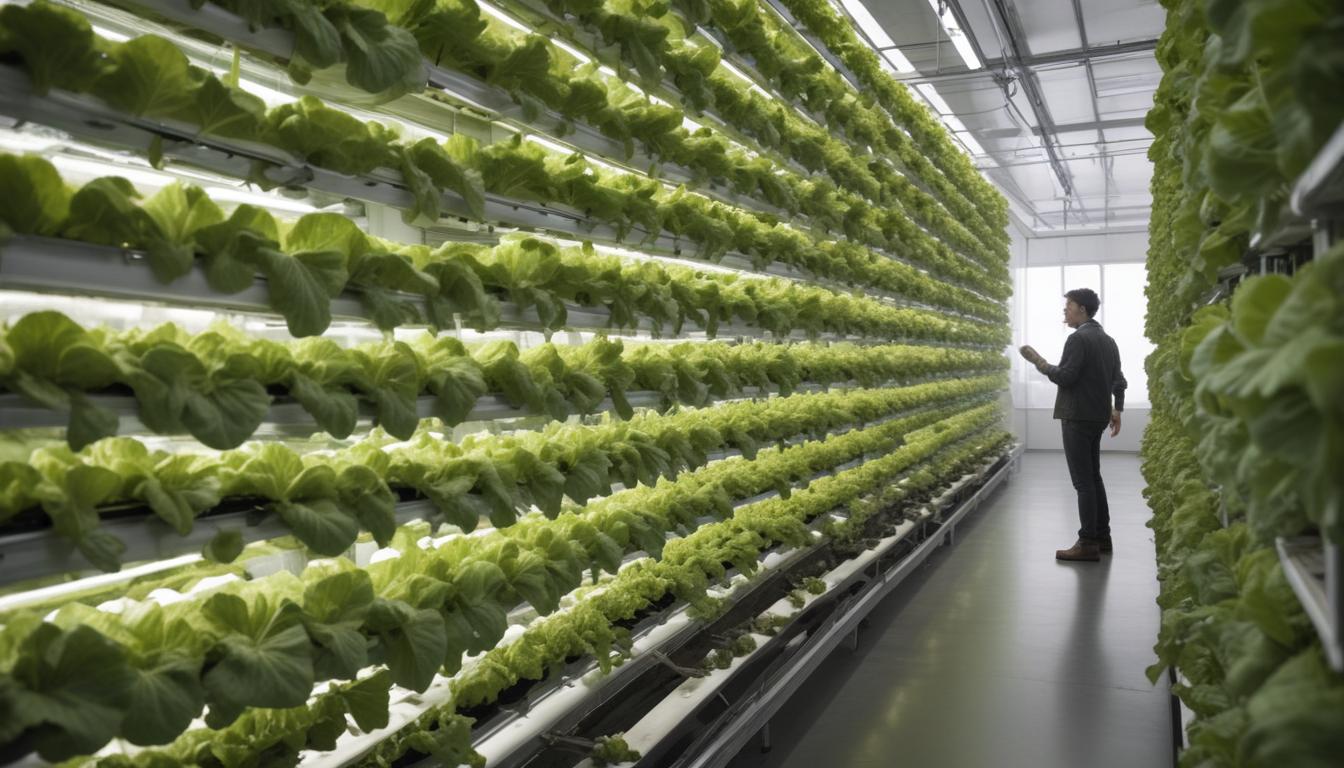Now Reading: Grow Up The Rise of Vertical Farms
- 01
Grow Up The Rise of Vertical Farms
Grow Up The Rise of Vertical Farms

Vertical Farming A Revolution in Sustainable Agriculture
Have you ever stood in the produce aisle, looking at a head of lettuce that has traveled thousands of miles to reach your cart? You might worry about the pesticides used to grow it, the nutrients lost during its long journey, and the massive carbon footprint of its transportation. The desire for fresh, local, and sustainably grown food feels more urgent than ever, yet for many, especially in urban areas, it seems like an impossible dream. What if the farm wasn’t miles away, but just around the corner, or even in the next building?
This is the promise of vertical farming, a groundbreaking approach to agriculture that is set to redefine our relationship with food. By moving farms indoors and upwards, this innovative method tackles the most pressing challenges of our modern food system head-on. It offers a solution that is not only better for the environment but also delivers fresher, more nutritious produce directly to our communities. Vertical farming is more than just a novel idea; it’s a practical and powerful tool for building a more sustainable and food-secure future.
What Exactly Is Vertical Farming
At its core, vertical farming is the practice of growing crops in vertically stacked layers, often inside a building or a shipping container. Instead of sprawling horizontally across acres of land, these farms reach for the sky. This method operates within a system known as Controlled Environment Agriculture (CEA), where every element of the growing process is meticulously managed. Forget about unpredictable weather, seasonal changes, or soil-borne pests; in a vertical farm, the environment is perfectly optimized for plant growth 24/7.
This level of control is achieved through advanced technology. Plants are typically grown using soilless techniques like hydroponics (nutrient-rich water), aquaponics (integrating fish to provide nutrients), or aeroponics (misting the roots with water and nutrients). Specialized LED lights act as the sun, providing the exact light spectrum plants need to thrive, while automated systems regulate temperature, humidity, and CO2 levels. It’s like giving each plant its own personal, five-star resort, ensuring it grows faster, healthier, and more predictably than its outdoor counterparts.
The Key Benefits of Growing Upwards
The shift from traditional fields to vertical stacks isn’t just a change in orientation; it’s a fundamental leap forward in agricultural efficiency and sustainability. The benefits extend from the global environment right down to the taste and quality of the food on your plate.
Year Round Crop Production
One of the most significant advantages of vertical farming is its independence from the seasons. Traditional agriculture is at the mercy of the weather; a single drought, flood, or early frost can wipe out an entire harvest. Vertical farms, by contrast, create their own weather. This indoor, climate-controlled environment allows for the continuous, year-round cultivation of crops.
This means you can enjoy fresh, locally grown strawberries in the dead of winter or crisp lettuce during a summer heatwave. For communities, this creates a stable and reliable food supply, reducing dependence on imports and buffering against supply chain disruptions. The ability to harvest crops consistently throughout the year makes food availability more predictable and resilient.
Reduced Water and Land Use
Traditional agriculture is one of the world’s largest consumers of fresh water and land. Vertical farming dramatically flips this script. By using hydroponic or aeroponic systems that recirculate water, vertical farms can use up to 95% less water than conventional farming methods. Water isn’t lost to evaporation or runoff; it’s captured and reused in a highly efficient closed-loop system.
Furthermore, the land footprint is astonishingly small. A single vertical farm housed in a small warehouse can produce the equivalent of hundreds of acres of traditional farmland. This incredible efficiency means we can grow more food on less land, freeing up vast areas for reforestation, rewilding, and restoring natural ecosystems. It’s a powerful way to feed a growing population while giving land back to nature.

Navigating the Challenges of Vertical Farms
While the potential of vertical farming is immense, it is not without its challenges. It is crucial to acknowledge these hurdles to understand the full picture and the path forward for this technology. The most significant concern is energy consumption. Replicating the power of the sun with thousands of LED lights and maintaining a perfectly controlled climate requires a substantial amount of electricity.
To be truly sustainable, vertical farms must be powered by renewable energy sources, such as solar, wind, or geothermal. As the cost of renewable energy continues to fall and LED technology becomes even more efficient, the energy footprint of vertical farming is steadily improving. Another current limitation is the range of crops that are economically viable to grow, with the focus primarily on leafy greens, herbs, and small fruits. However, ongoing research and innovation are constantly expanding the variety of produce that can be successfully cultivated in these indoor environments.
The Future is Vertical Paving the Way for Greener Cities
Imagine cities where fresh food is grown in repurposed warehouses, integrated into the architecture of new buildings, and available at hyper-local markets in every neighborhood. This vision is rapidly becoming a reality. Vertical farming is a key component of the smart, sustainable city of the future, drastically reducing food miles and reconnecting urban populations with the source of their food.
Vertical farming is not intended to replace traditional agriculture entirely but to serve as a vital supplement to it. It is perfectly suited to provide fresh, pesticide-free produce to urban centers, where the majority of the world’s population will live. By embracing this technology, we can build more resilient food systems, reduce our environmental impact, and ensure that everyone has access to fresh, healthy, and delicious food. The future of agriculture is not just on the ground; it’s also rising to the sky.


































